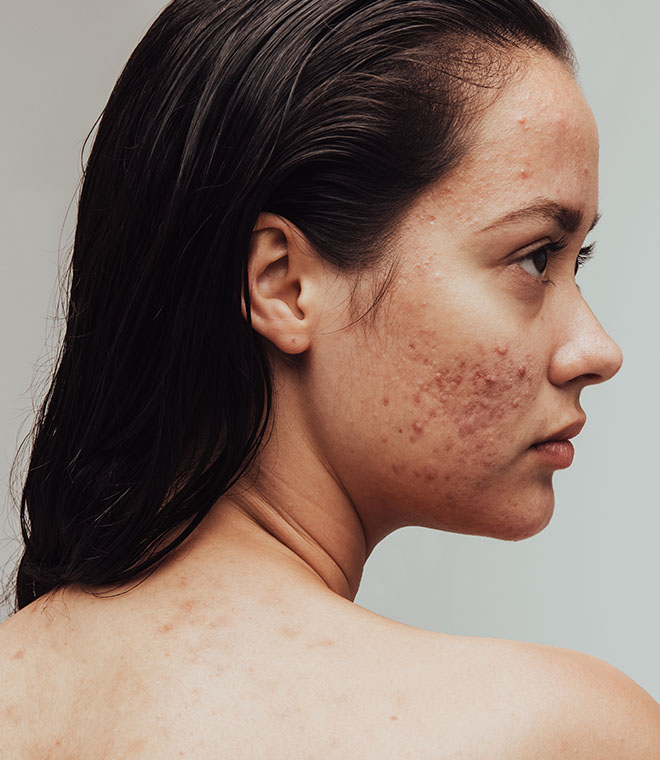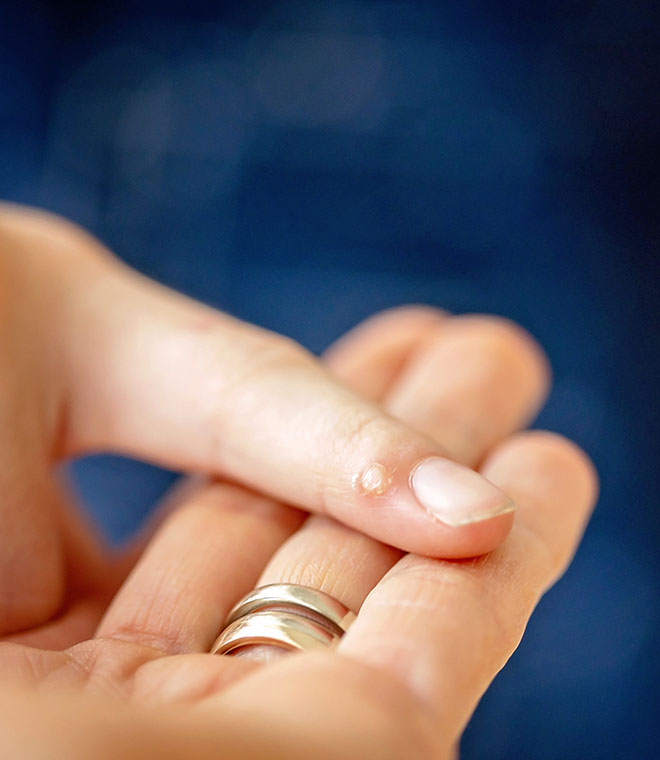Health
Skin discoloration on the face
By Ruben J. Rucoba, MD Oct 15, 2021 • 7 min
Your most recognizable physical feature is your face.
In terms of your physical appearance, it's the part of you that makes you uniquely you. So when there's a problem with the skin on your face, like discoloration, it's normal to get concerned. There are several types of discolorations, and, while almost all types are harmless, there can be many different causes of skin pigmentation disorders.
What are some common causes of white spots on the face?
The technical term for light spots on skin is hypopigmentation. The condition occurs when there is a lack of melanin in the skin. Melanin is the pigment your body makes that gives the skin its color. There are many causes of hypopigmentation:
- Vitiligo—In vitiligo, it is thought that the body's immune system attacks melanocytes (the cells that contain melanin), causing loss of pigment in certain parts of the body. These flat, smooth, white patches can be found anywhere on the body, but they’re often located around the face. There is no cure for vitiligo, but treatments are available to improve the symptoms of vitiligo.
- Post-inflammatory hypopigmentation—This type of discoloration sometimes occurs following trauma to the skin (burns, blisters, etc.) or overuse of some topical medications (such as steroids), causing the skin to become much lighter. The issue often resolves with time, but it can take months or years to fully resolve. Makeup can be used to cover up discolored areas.
- Pityriasis alba—This is a harmless, common condition that starts as small, red, scaly spots on the face, upper arms, neck, torso and other parts of the body. It then fades to become small white spots. Pityriasis alba usually fades on its own, but if it doesn’t, topical steroids are sometimes used to help reduce the rash.
- Tinea versicolor—This condition causes patches of dry, white skin on the face, as well as other areas of the body, such as the trunk and shoulders. The patches have a fine, scaly surface. Tinea versicolor is caused by a fungal infection and is treated with either over-the-counter or prescription antifungal medicines.
What are some uncommon causes of white skin spots and white discoloration on the face?
The following are uncommon causes of hypopigmentation:
- Albinism—This is a genetic (inherited) disorder in which the body doesn’t make melanin in the skin, hair or eyes. Because of the lack of melanin, people with albinism need to wear sunscreen at all times, as they are at a higher risk of skin cancer. There is no cure for albinism.
- Scleroderma—This is a rare autoimmune disease in which the body makes too much collagen, resulting in patches of hard, tight skin and possibly problems in joints, muscles and internal organs. The rash of scleroderma can show up as either white patches on the skin or dark patches on the skin.
What causes dark spots on the face?
Hyperpigmentation, or dark spots on the skin, is the result of too much melanin. There are many causes for this, including:
- Melasma—Caused by overproduction of melanin, melasma is common in pregnancy and when there are hormonal imbalances (often the result of birth control pills and hormone replacement therapy). Melasma appears as dark, hyperpigmented spots or discoloration on the upper lip, chin, forehead, cheeks and nose. Melasma often fades on its own, but it can be treated.
- Nevi (moles)—Nevus is the technical term for a mole (nevi is the plural). Nevi are benign and harmless. The only problem with nevi is cosmetic, particularly if they are large.
- Nevus of Ota—This is a birthmark caused by too much melanin around the eye, which occurs as a bluish or dark grey discoloration of the skin around the eye and sometimes of the eyeball itself. People with nevus of Ota can also have other eye problems, such as glaucoma or cancer of the eye. This condition should be regularly evaluated by a neurologist and ophthalmologist. Treatments for skin discoloration are available.
- Café-au-lait spots—Named for the French term for "coffee with milk," café-au-lait spots are common, small, flat, dark spots. Having many of them can be a sign of a rare condition called neurofibromatosis, and the spots should be evaluated by a dermatologist.
- Incontinentia pigmenti—This is an inherited disorder affecting the skin, teeth, bones, eyes and central nervous system. The disease causes hyperpigmentation of the skin in infants, which usually fades with time. Other symptoms include vision problems, seizures, muscle spasms and mild paralysis.
- Age spots—Also known as sun spots, lentigines and liver spots, these hyperpigmented lesions are common in sun-exposed areas, such as the backs of the hands and the cheeks, nose and other parts of the face. These are flat lesions that increase in number with age. They are harmless, but can be treated if they are cosmetically unappealing.
- Scleroderma—This condition can present itself as dark or light patches.
What causes red spots on the face?
Red spots on the face are often due to a birthmark. These are vascular lesions—birthmarks caused by a collection of blood vessels or malformed pigment cells arranged in a particular way. The most common birthmarks are:
- Hemangiomas—A type of vascular birthmark, strawberry hemangiomas often fade on their own.
- Macular stains—These types of birthmarks are also known as "angel kisses" or "stork bites." They usually fade with time and are harmless.
- Port-wine stain—These marks are flat and permanent, although they can be treated with lasers. Port-wine stains can be a sign of other syndromes.
Most of these different types of discolorations of the face are harmless, but some may pose health issues. If you have any concerns about your skin, be sure to ask your doctor for an evaluation, exact diagnosis and treatment if necessary.
Published October 2021.
Sources:
1. https://www.aafp.org/afp/2017/1215/p797.html
2. https://www.hopkinsmedicine.org/health/conditions-and-diseases/skin-pigment-disorders
3. https://www.mayoclinic.org/diseases-conditions/albinism/symptoms-causes/syc-20369184
4. https://www.aocd.org/page/PityriasisAlba
5. https://www.mayoclinic.org/diseases-conditions/tinea-versicolor/symptoms-causes/syc-20378385
6. https://www.aad.org/public/diseases/a-z/scleroderma-overview
9. https://www.ninds.nih.gov/Disorders/All-Disorders/Incontinentia-Pigmenti-Information-Page
10. https://www.aocd.org/page/Lentigines. Accessed August 11, 2021
11. https://www.hopkinsmedicine.org/health/conditions-and-diseases/birthmarks
12. https://www.rheumatology.org/I-Am-A/Patient-Caregiver/Diseases-Conditions/Scleroderma
13. https://www.mayoclinic.org/diseases-conditions/tinea-versicolor/symptoms-causes/syc-20378385



